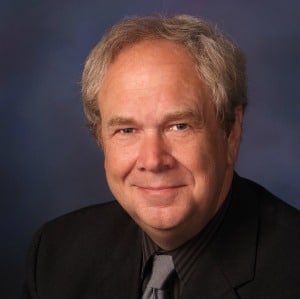
Over the years AM Radio has always been on of the most controversial topics we have written about. It always leads to a lot of discussion, comments, feedback and angst. Broadcasters are either extremely passionate about keeping AM Radio alive, or, they say it should be killed off because of how impossible it is to listen to due to the noise. Bryan Broadcasting’s Ben Downs says he has the solution.
Downs says the time has come to make a change to save the AM dial. Downs says the time has come for The FCC to allow AL licensees the option to license their stations as all-digital, using the HD MA3 mode. Bryan Broadcasting owns four AM stations, five FM stations, and six FM translators in Central Texas. He says consumers are never going back to the AM dial with the way it sounds today.
Bryan Broadcasting has filed a Petition for Rulemaking urging the FCC to initiate a proceeding to authorize the MA3 all-digital mode of HD radio for any electing AM station. “Permitting such modernization would—without impairing other competitors in the broadcasting ecosystem — give AM broadcasters a needed innovative tool with which to compete.”
In his FCC petition Downs states that he’s seen the decades-long decline of audience share for AM stations. “In BBC’s experience, the AM band has become so overwhelmed by interference and impulse noise that the resultant audio product is rendered unacceptable to modern listeners. Indeed, the noise floor generated by unlicensed devices impacting the AM band has been noticeable—and increasing—for years.”
He adds that no modern audience will accept the low audio quality that can be observed by anyone who tunes into the senior band; the noise floor problem represents an existential threat to AM radio. “On AM stations where music exists, it is in primarily niche formats; these stations are invaluable to their communities, but discovery by new, young listeners is difficult to promote.”
Downs believes that all-digital systems represent the future of AM radio and will provide the listener with a pristine audio product free of audience-eroding interferences.
He would like The Commission to issue a Notice of Proposed Rulemaking allowing AM licensees the option of electing to transition to the MA3 all digital mode of HD radio.
Ben Downs can be reached by e-mail at [email protected]






I have a Sangean DH radio. This radio does the best job on AM-FM I have seen in quite a long time.
It is DSP and I was concerned about “Soft Muting” No problem AT ALL.
On FM it is quite selective and sensitive. Much better than the PR-D5 Separation is excellent with very good stereo imaging using only the built-in rod antenna. On HD it sounds very good and tuning in HD2 and HD3 is easy and no problem.
On AM the sensitivity is on a par with the PR-D5, and RF 2200 It easily hears a 1KW station on 1360 90 miles away despite a local 1KW station on 1380. Also the power supply included does not introduce any noise, even on the weakest AM signals at the low through the high end of the band
I think that the switch to HD radios is justified. Investing in the best HD radio is a wise decision especially if you want to broadcast the content of convenient AM and FM stations over digital signals. The good thing about most AM/FM HD radios is that they tend to produce a better quality of sounds compared to AM/FM radio bands.
I used to love listening to analog AM at night. I no longer can, thanks to the hiss and hash produced by some of the digital signals. I know my voice doesn’t matter and you guys are going to do what you’re going to do, but my vote will always be in favor of keeping analog AM.
Let the station owner chose whether to use all digital on air and see what happens. I personally want to be the last analog AM on the dial so that all of the old radios will be tuned to me and I WILL have excellent audio quality on it. Tim Cutforth
This is not an either/or discussion in terms of the issue.
It’s both.
1. AM is indeed challenged by interference issues.
2. AM is also increasingly challenged by less desirable programming (overall). A blighted neighborhood effects nice remaining properties, too.
At the same time, much of the noise on AM is actually created by the AM stations themselves, which employ IBOC. The adjacent channel interference and horrible hiss is beyond problematic – and the characteristics of the band simply are what they are. AM HD is worse at night, when the band comes alive and stations leave their HD running.
I oversaw some major successful AM stations – and I had our teams turn off the HD, for good. In each case, we were able to regain lost modulation levels which dropped the noise floor and improved the experience for our (mostly) analog listenership. For distance listening, particularly at night, these 50kw stations do much better without it.
There are plenty of other options and ways to listen. Stations stream – and can be heard in home and office settings on smart speakers.
For those in the local listening area who are looking for cleaner sound, translators, FM HD2, FM simulcasts, etc., are options, too.
The notion of trying to manipulate AM technology, when its characteristics prevent it from being done in this manner, is wasteful of time and money. The listeners, outside of a few radio tech enthusiasts, couldn’t care less.
If AMs could have been moved to an expanded HD FM band, and all FM channels were realigned to channel numbers and not “layered” as they are, we would have had a great continuous band – but that ship has sailed.
Of course, cause-and-effect comes into play as the current unexpanded FM band is now overcrowded – and FM is now is experiencing the same issues that plagued AM.
Many countries have aggressively eliminated the use of AM, and others, like Canada, have done so with a slower approach.
In more recent years, I’ve had very few people complain about the fidelity of AM radio. Most of that happened years ago as FM stations, playing music provided a better experience from an audio quality perspective.
There are thousands of FM stations and translators that don’t even broadcast in stereo any longer. They do so to increase their range, and since most radios no longer include a stereo pilot light, many listeners can’t even tell the difference. What’s also interesting to note is that today’s music is not produced for audio quality, or dynamic range. It’s created for a constant volume level and actually commonly distorted and compressed on purpose!
Reduce AM interference with a less crowded AM band, on crowded frequencies when a station goes dark don’t reassign it. For small stations with FM translators, allow them to shut off their AMs. Many an owner of a 1kw daytimer or a station with 7 watts at night would be just as happy to not have to worry about maintaining an AM that no one will listen to or even hear.
Let the big AMs that couldn’t even get an FM translator because they were the last allowed at the trough to apply, “own” the AM band.
They were put at the back of the line, often behind some low-powered AM station run from an equipment rack that provides no service to the community.
I disagree somewhat with Phil G. that the problem is programming. To some extent I believe the programming decisions are driven by the poor audio quality. True, most people are not audiophiles, but when you’re an under 35-something individual who grew up in an era when small audio devices began having sound quality rivaling the much larger equipment baby boomers bought in the 60’s through the 80’s, can we realistically expect them to embrace AM radio? I doubt it.
Let’s look at this from a sales and ownership perspective as well. I suspect that there are AM’s in radio groups where the sales staff sells that station not as a first tier option but as a “value-added” buy. In other words, buy a certain amount of air time on one or more of the FM’s and they give you bonus spots on the AM. The discrimination that causes owners/managers to handle things this way had to start somewhere and I assume it starts with business owners who no longer see AM as viable as it once was. So don’t you think if there was a “magic bullet” format that would make more AM stations a top tier sales option that owners would be implementing it by now?
Phil G. mentioned DRM. I don’t know anything about that option but have run across it many times when researching upgrades to my home audio equipment. I wish I could hear a demo. It certainly sounds interesting.
I doubt that Sanford’s statement that HD radios aren’t selling would hold up under scrutiny. Whether it’s an aftermarket car unit, a table radio or a stand-alone component tuner, I doubt the companies that currently manufacture such products would be making the investment if they didn’t feel there was a profitable market for it.
I do agree with Phil G. regarding the mess he alludes to if we did away with the 1934 signal protections. That reminded me of two ideas.
As I recall, Radio Shack had a unit years ago that could be used to reduce or eliminate static in audio. Can someone refresh my memory on that because I’m wondering why in our era of digital signal processing why circuitry like this couldn’t be used in all analog AM receivers.
As far as skywave propagation is concerned, here’s another idea. I asked our engineer if it might be possible to create an AM radio that actually could discriminate between a strong local station and a distant one on the same frequency. He suggested that perhaps something like that could be based upon GPS technology. If workable, perhaps such radios could have the circuitry switchable so that those who enjoy DXing could still do so.
For those who believe such ideas are nothing more than putting lipstick on a pig, then let’s look back.
Remember AM stereo? I was an air personality for the first station in my market to install the Motorola system. Daytime audio was quite good. Eventually I heard something about the whole situation being tied up in litigation by a competitor. By the time the FCC declared a winner years later, it seemed that AM stereo had been buried and the gravestone was in place.
So, if analog AM stereo is out, how about bringing back the idea of wideband mono audio for AM? I have an old GE Superadio with a normal/wideband switch. When listening to talk on AM and switching to hear speech on FM, the audio quality difference is minimal. As most of you probably know, the problem here is primarily with receivers, not with the transmitters. I don’t know what the highest frequency is that’s reproduced by the GE unit but even if it’s only 6kHz, that’s a world of difference to my ears compared to the tuner in my last stereo receiver that rolled things off much lower than that.
All the banter I’ve seen on this issue over the years is fine but if it’s perfection we seek, then nothing will likely get done. In other words, we have options folks. The question now is whether or not we’re going to come to a consensus through compromise and demand that the FCC do something because in my opinion, flooding the FM dial with more translators is not the answer.
While communicating with the FCC may seem like the most obvious solution, it might be helpful to let your elected representatives know how you feel as well. Call or e-mail your senators at 202-224-3121 (www.senate.gov) and your congressmen at 202-225-3121 (www.house.gov). After all, if the FCC starts hearing from elected officials on this issue and not just individual citizens, it might make a difference.
“I believe the programming decisions are driven by the poor audio quality.”
I agree. The fact is the big Top 40 AM stations kept playing the hits in the 70s with the same big name DJs, and meanwhile the audience moved to FM until one by one they flipped to talk. Even now, the big all news AMs are watching their shares decrease and target demo go up every year. WFAN, WBBM, and WMAL have all added FM simulcasts. And lots of AM stations are discovering they have more people listening to their 100 watt FM translator than the main AM signal. This is not a programming problem folks.
Check this out everyone. I just saw this online and I thought all of our AM friends would get a kick out of it: Japanese broadcasters call for end to mandatory AM radio due to cost and lack of listeners
https://www.japantimes.co.jp/news/2019/03/28/national/japanese-broadcasters-call-end-mandatory-radio-due-cost-lack-listeners/#.XJ01fPkrIrg
I’m with Phil G. !
I’ve been reading all these articles about how bad AM sounds. I’m really not hearing it. I don’t know if it’s because I live in an area with great ground conductivity, or what
The short answer to the question in the headline is NO !!! The digital service should be an added feature but not at the expense of our analog service. Obviously, a forced change would insure the death of AM Radio because the receivers don’t exist to support the change.
I am reading consistent complaints about AM sound quality and interference but few solutions within the confines of current rules.
At KCAA, we send the highest quality AAC signal (wireless) to our transmitter site with Comrex Access units. There is no pre-processing. The signal is converted to analog when it leaves the Comrex and is fed into a fully refurbished Optimod 9100. From there, it goes into an Aphex Aural Exciter-Big Bottom combination and then into our 30 year old Harris SX 2.5 transmitter and out to our two, self supporting, Folded Unipole directional antennas.
We have a loud and rich sounding AM signal across the Inland Empire region of Southern California with equipment that some engineers would only want to see in a museum.
My point is simple. If AM owners will do what’s necessary to make the very best AM sound possible with existing technology, listeners will be surprised at how good your AM stations can sound.
I agree wholeheartedly Fred. Our listeners to KQNA never complain about audio quality and constantly praise us for our signal coverage. We upgraded to a solid state AM and added Orban processing to make us sound great. Keep the AM band!
Sanford,
Try adding an Aphex Aural Exciter and Big Bottom behind the Orban and watch what happens. It will sound like a cranked up Ampliphase without the Ampli”fuzz”
Time and time again, someone always touts some whiz-bang technology to “fix AM”. The worst problem facing AM is lousy programming. Who wants to listen to endless infomercials for questionable real estate deals, quack dietary supplements, and gadgets that may or may not work? Scan the FM band and find a niche that is unfilled by the FM stations! IHeart Media may be on to something by broadcasting various podcasts over WSAN, 1470 kHz in Allentown, PA.
As for digital, a better idea is to petition the FCC for permission to use the DRM system that is used outside of our petty little corrupt American world. DRM is an open system that works well in the presence of skywave; in fact, shortwave stations that DEPEND on skywave for their coverage use it. Single-frequency networks may also be built in the AM band. One such network operates around Berlin, Germany. Unlike iBiquity’s HD Radio, there are no continuing royalties with DRM. Struggling AM broadcasters can ill afford to pay such tribute to iBiquity. Stations using DRM can also multicast on AM. But if there are few or no receivers, any conversion to digital is a recipe for failure.
Better programming would drive receiver penetration…witness the growth of FM after 1966, when AM/FM combos were forced by the FCC to stop simulcasting the AM station and to find something to put on FM. And FM is a way to overcome static and impulse noise. Major Armstrong demonstrated that when he put his experimental W2XMN on the air in 1938. Yet FM receiver penetration remained low until the 1970s. Simulcasts from AM and sleepy elevator music were not an incentive for most people to purchase FM receivers.
Again, dump iBiquity’s system, adopt DRM for digital transmission on the AM band, study the history of FM radio, and PUT BETTER PROGRAMMING ON THE AM BAND, especially on those stations considering a conversion to digital.
Amen on programming for the whole industry!! And localism works!
People aren’t buying HD radios so this proposal won’t work. With the rediscovery of vinyl LPs comes a new nostalgic appreciation for the ubiquity and signal coverage of AM. It’s audio quality expectations are already secondary to its radio legacy role in markets like ours. My only suggestion is to give daytimers some non directional night signal and drop the 1934 era protection. It’s not needed.
“My only suggestion is to give daytimers some non directional night signal and drop the 1934 era protection. It’s not needed.” Unfortunately, Mr. Cohen, you cannot change the laws of physics. Skywave is part and parcel of broadcasting in the mediumwave band. Want to hear what the AM band will sound like without those “1934-era protections”? Tune to 1230, 1240, 1340, 1400, 1450, or 1490 kHz at night and enjoy the cocktail party effect that you will hear under any local station that uses one of those frequencies.
Yes but in my small community even 15 watts overnight would provide adequate coverage and not add to the audio gumbo you describe.